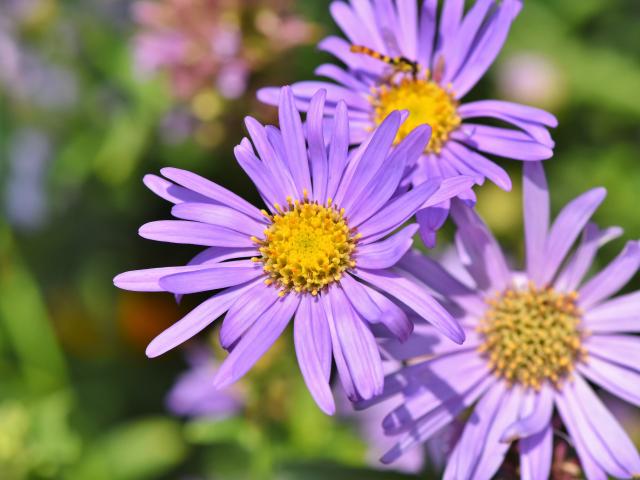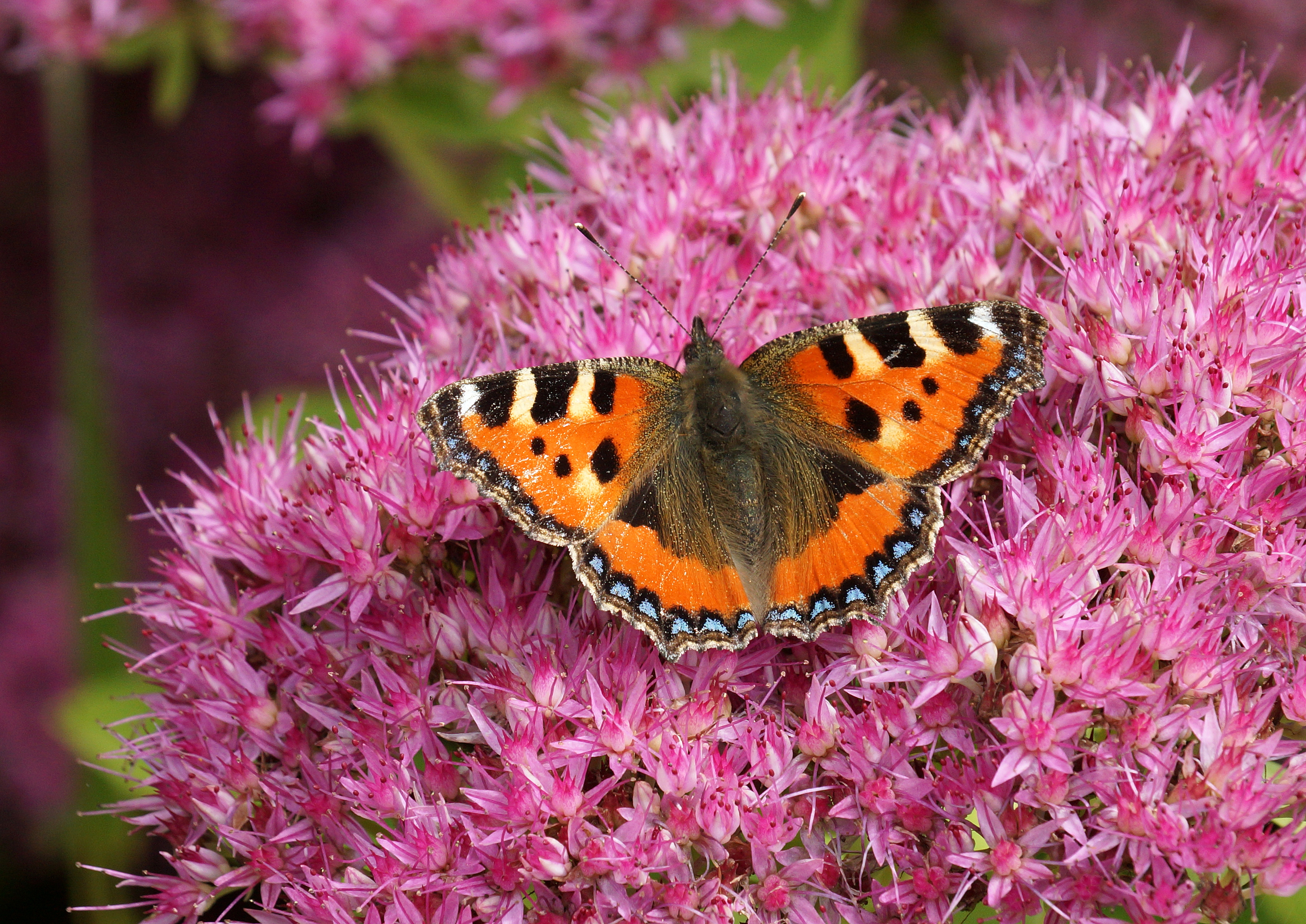In September the weather is still warm by day but the effects of the shortening daylight hours are more noticeable and the nights are cooler.
There should still be plenty of plants in flower in your garden, providing nectar for butterflies, moths and bees. Continue to deadhead them to extend the flowering season as long as possible.
Butterfly-friendly plants which will flower through autumn include Aster, Anemone japonica and Sedum spectabile. They are still on sale in garden centres now, so it’s not too late to add them to your garden.
Asters can be annual or perennial. The annual asters, which were popular with Small Tortoiseshell butterflies during the Big Butterfly Count, should flower well into September.
Perennial asters are also good nectar providers for butterflies and moths. Now is the time to give them a bit of care and attention to keep them healthy into next year.

Asters and other herbaceous perennials, including Chives, Coreopsis, Echinacea, Erigeron, Helenium, Origanum, Phlox, Rudbeckia and Solidago, form clumps that benefit from being divided every three to four years. Left to their own devices, the centre of the plant becomes old and tired and often dies out, leaving vigorous areas of growth and flowers on the outside of the clump.
Division is best done in the autumn, at the end of September and through October, while the soil is still warm and not too wet, so plants can make new roots quickly.
If your soil is waterlogged or the plants are tender, with soft foliage, then you could wait until spring to divide them. You can also wait until March to divide plants like Sedum spectabile, as it’s a shame to disturb them now when they are in full flower and providing excellent nectar for butterflies and moths.
Plants can be divided in several ways, depending on how tough they are to separate. After lifting the plant with a fork or spade, either tease apart by hand, divide with a spade or, if fibrous-rooted, put the clump onto a piece of polythene and force apart with two forks pushed in back to back and then pulled apart.
Discard the old, inner pieces and replant the younger, outer pieces, with good roots. They should be planted as soon as possible after division and watered well. For the best results add some compost or manure to the soil to enrich it.
Taking time to do this is worth the effort. It produces healthy plants that will provide plenty of nectar for the next three to four years.
There’s also the added benefit that you could end up with too many extra plants for your garden. Why not pot them up, labelled with the name and their value to butterflies and pass them on to your friends?
Happy Gardening!
The Secret Gardener


